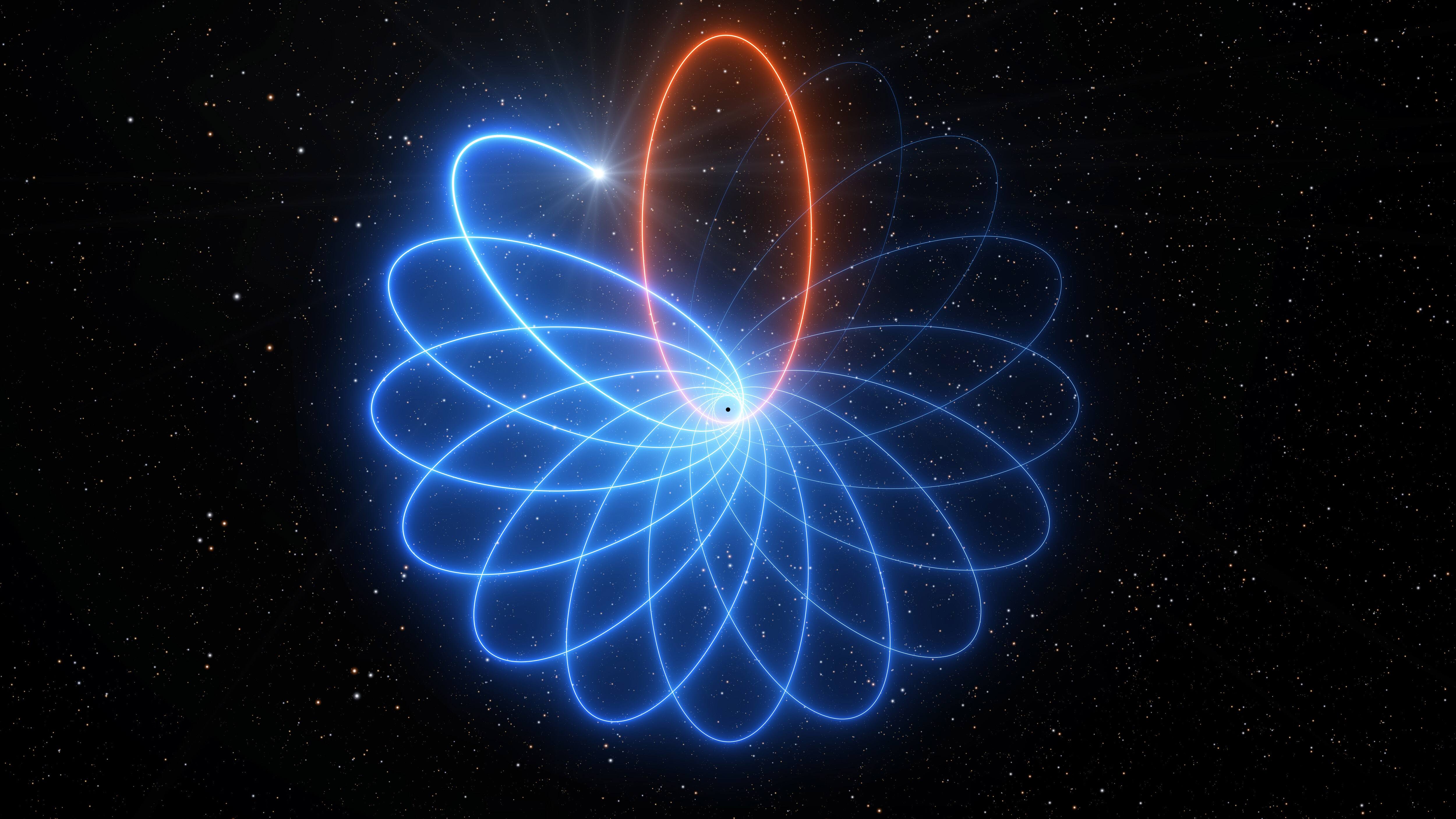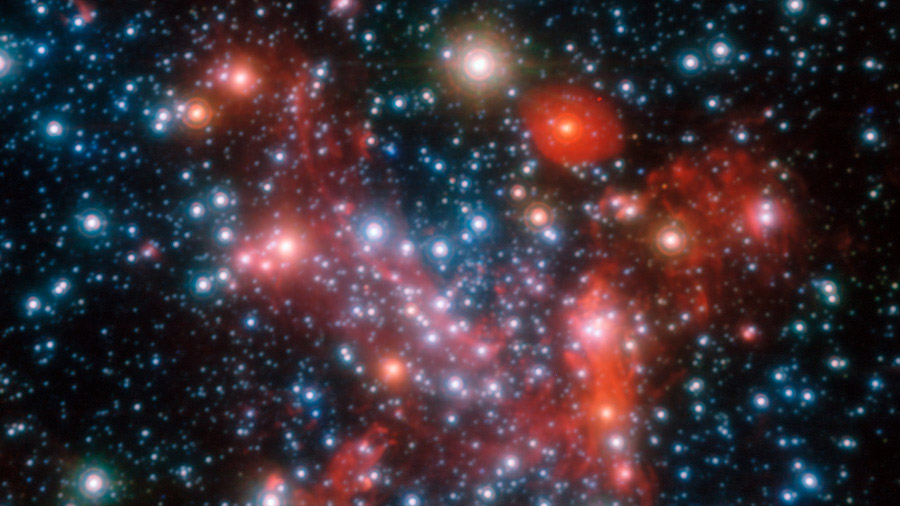Nobel Prize-winning physicist Reinhard Genzel talks to Space.com about the questions scientists want answered about the supermassive black hole at the center of our galaxy. Spoiler alert: Those answers may be coming soon.
There are few people in the world as qualified to talk about the black hole at the center of our galaxy as 2020 Nobel Prize in Physics laureate Reinhard Genzel. It was his decades-long research into this odd object called Sagittarius A* that gathered enough evidence to prove “beyond any reasonable doubt” that this radio wave-emitting body is indeed the Milky Way‘s central supermassive black hole.
And any residual doubt has now been removed by a different team, the Event Horizon Telescope partnership. The EHT team made waves in 2019 by taking the first-ever photograph of a black hole, the supermassive one at the heart of the distant galaxy M87 — and has now done the same with Sagittarius A*.
Related: A powerful jet emerges from a black hole in unprecedented detail in new images
The journey to determine the mass
Genzel, who is the director of the Max Planck Institute for Extraterrestrial Physics in Germany, and his team use the Very Large Telescope in Chile to observe stars orbiting very close (a few times the distance of the dwarf planet Pluto from the sun) to Sagittarius A*. Through decades of observations, they were able to analyze orbits of these stars as they hurtle around the galactic center at mind-boggling speeds of thousands of miles per second (up to 40 times faster than the orbital speed of the sun).
From these orbits, they determined that Sagittarius A* packs the mass of over 4 million suns into a volume of space only 6 light-years across. It is so dense, compact and heavy that it cannot be anything currently known to science other than a black hole.
Observations by an American group led by astronomer Andrea Ghez, who shares the 2020 physics Nobel Prize with Genzel, independently arrived at the same results.
“Over the years, we have established a very sound case that Sagittarius A* is a black hole,” Genzel told Space.com. “We have managed to calculate its mass with an accuracy of 0.1% and established its distance from Earth to about 0.2%.”
The missing event horizon
With that information, Genzel added, the researchers could calculate the size of the black hole’s event horizon, the boundary behind which nothing, not even light, escapes. But while they managed to determine the event horizon mathematically, they could not confirm their calculation with an observation, as their technique couldn’t actually see Sagittarius A*.
“The stars that we have been looking at orbit about 1,000 times farther away from the black hole [than the event horizon],” Genzel said. “So there was a slight possibility that there could be some configuration of mass at a distance of less than 1,000 times the event horizon other than a black hole.”
The Event Horizon Telescope has now provided the missing piece of evidence.
“We have known that the event horizon should be 50 micro arc seconds in diameter,” Genzel said. (An arc second is a measure of angular distance that equals 1/3600 of a degree.) “That’s exactly what the Event Horizon Telescope team found. With that, we can throw out all the other possible explanations of this mass. I think there cannot be any doubt anymore that Sagittarius A* is a black hole.”

How fast does Sagittarius A* spin?
This final confirmation comes nearly 90 years after the strange source of radio waves in the constellation Sagittarius in the southern sky was first discovered by American astronomer Karl Jansky. There is, however, still one major thing that astronomers need to learn to “put the final nail into this sarcophagus,” Genzel said. And that is how fast the black hole spins.
“The theory of general relativity basically says that black holes really only have two qualities,” Genzel said. “One is mass, that we already know, and the other is spin. Once we know these two qualities, that’s it. Black holes are defined by these two qualities, they have no shape, no hills or valleys, anything like that.”
The spin of the black hole, Genzel said, is determined by the infalling matter, and astronomers expect that Sagittarius A*, an overall underwhelming black hole, spins rather slowly.
“The spin comes from the material that falls into the black hole, which has angular momentum,” Genzel said. “If the material comes in from the same direction, you gradually spin the black hole up. But if you throw a cloud into the black hole from the right side on Mondays, and then on Fridays from the other side, you don’t spin up the black hole and you maintain a low angular momentum.”
For a black hole to spin fast, the black hole would have to devour huge amounts of material within a very short period of time, such as when two galaxies collide, Genzel added. And that hasn’t happened in the Milky Way’s recent history.

“In our galactic center, we believe that the amount of the gas which falls currently into the hole is not very much to start with,” Genzel said. “There has been no mechanism lately to spin up the black hole.”
Fast spinning black holes can produce spectacular jets, such as those coming from the M87 black hole, the object of the first-ever black hole photo campaign published in 2019. These black hole jets are streams of charged particles rocketing away from the black hole’s poles at nearly the speed of light. They are believed to be made of particles that were accelerated by the gravity of the black hole and ejected just before they fell in. But astronomers have observed no signs of such jets in Sagittarius A*.
“Our black hole only flares in the infrared light every few days for an hour or two,” Genzel said. “These infrared flares are probably blobs of very hot gas near the event horizon.”
Genzel believes that by combining the technique used and still advanced by his team and that of Andrea Ghez, with observations by the Event Horizon Telescope team, astronomers will be able to determine the speed of rotation of Sagittarius A* within the next few years.
“We are still refining our methods and the Event Horizon Telescope team are refining their methods, and I think that together, we will be able to get the spin of Sagittarius A*,” Genzel said. “It might depend on luck, too, if they get good data, or if we manage to find a star that orbits very close to the event horizon.”
Follow Tereza Pultarova on Twitter @TerezaPultarova. Follow us on Twitter @Spacedotcom and on Facebook.

